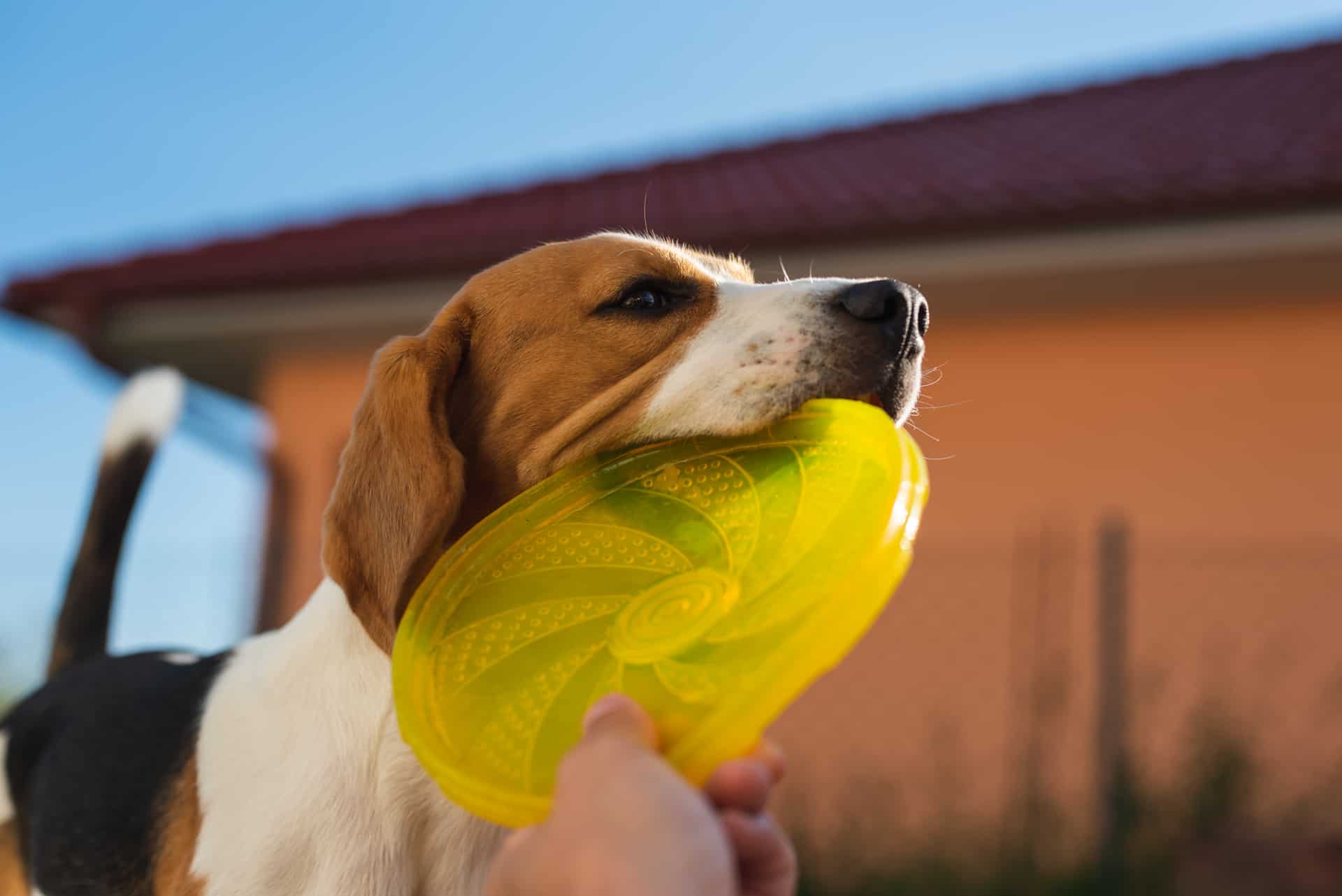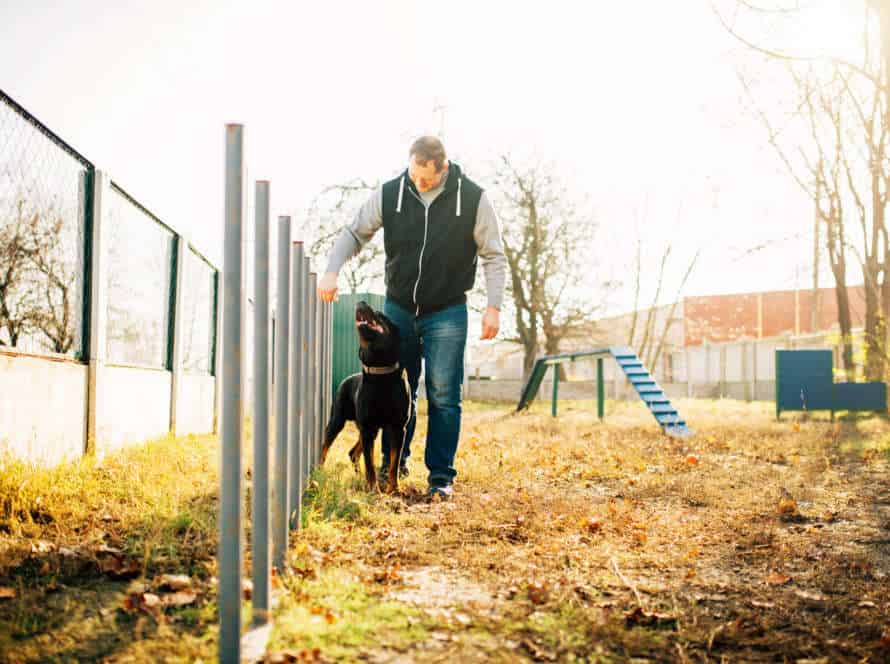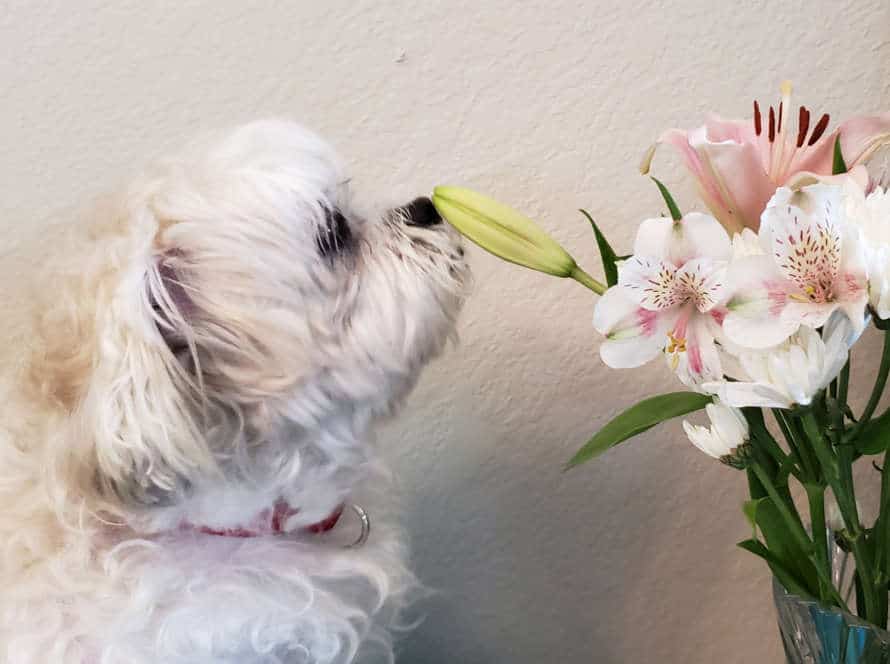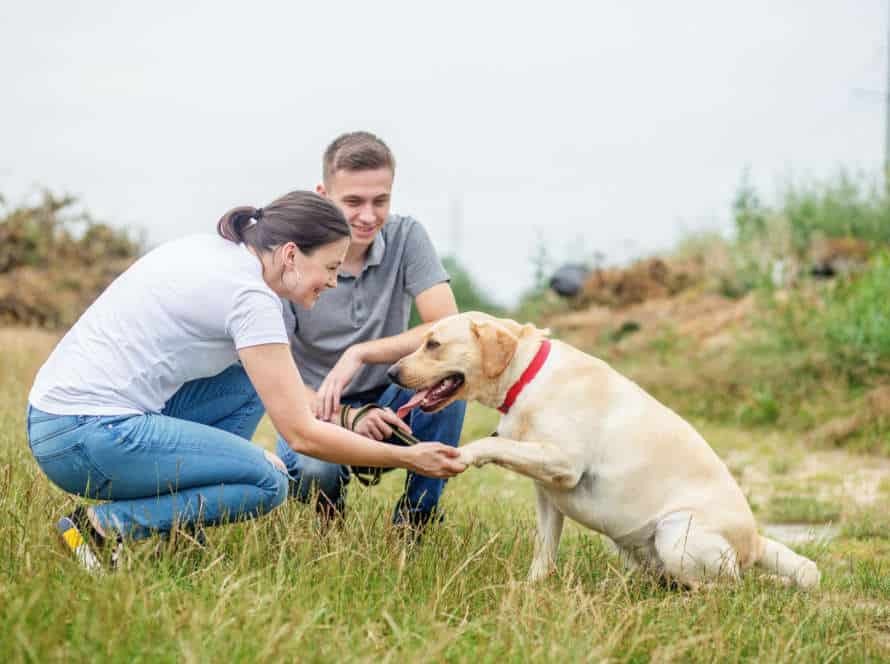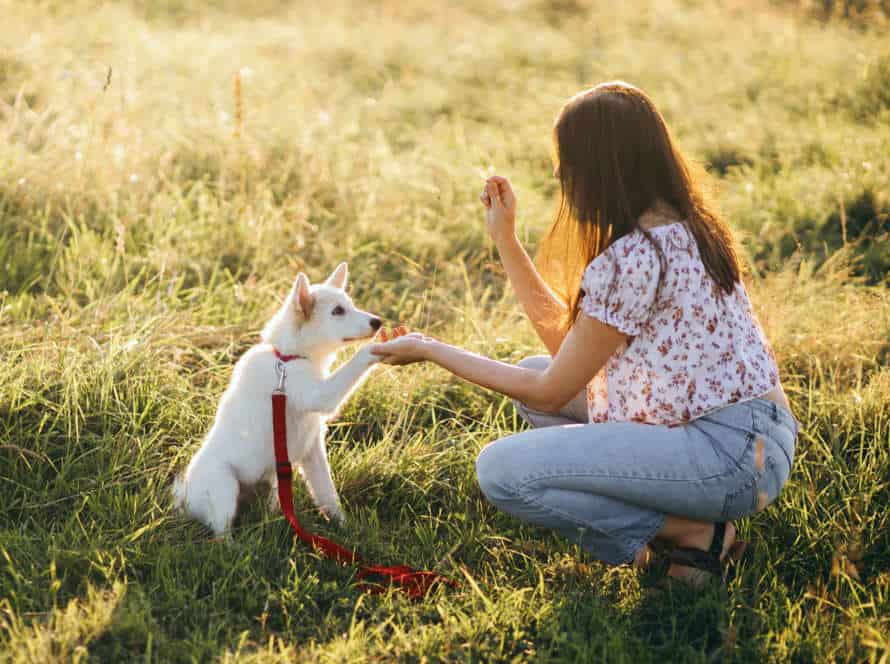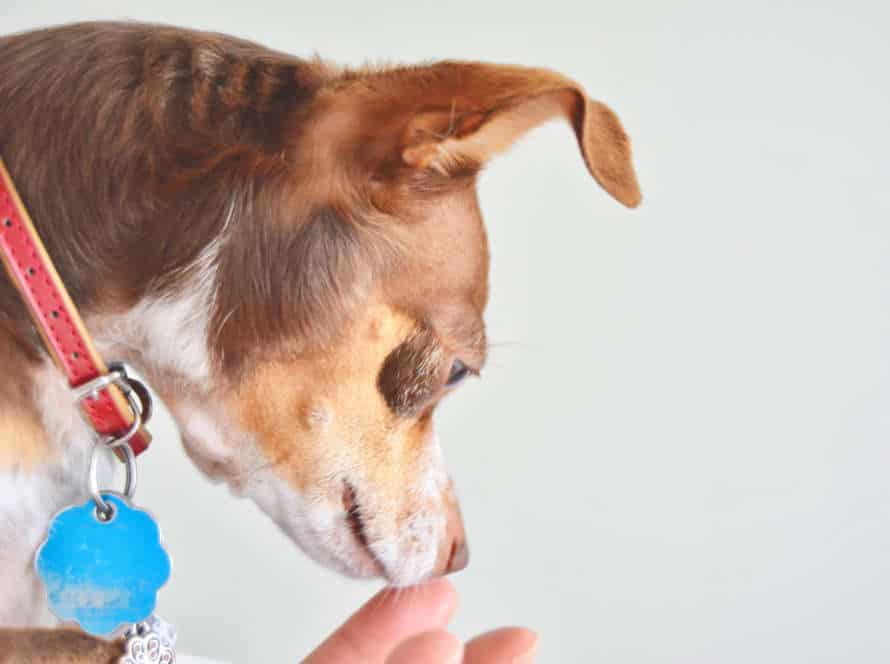Tug of War for Puppies: Setting the Stage for Proper Play
Tug of war is super fun for puppies! It helps them expend energy, bond with their owners, and develop natural instincts. But it’s essential to set the scene for the right kind of play, so there’s no aggression and everyone stays safe.
Here’s the lowdown on setting the scene for tug of war with your pup:
- Grab a designated tug toy that your pup won’t consider prey.
- Practice the “drop it” or “leave it” command with your pup before you start playing.
- Set boundaries, like not putting your hand or face in front of the dog’s mouth.
- Don’t play aggressively, and always end playtime with a victory for your pup.
Understanding the Game of Tug of War
Tug of War is an awesome game for puppies! It teaches them how to socialize with other dogs. But, it can be dangerous if not played right – so it is important to understand the game. Here’s what you need to do to make the environment safe and enjoyable for your pup to play Tug of War!
- Set the stage properly.
- Keep an eye on the game.
- Make sure the pup is healthy.
- Provide toys for the pup to play with.
- Monitor the pup’s behavior.
- Set boundaries and rules.
The purpose of Tug of War for puppies
Tug of War is a great way to give your pup some physical and mental stimulation! However, it’s important to play it right. Here are some of the benefits of Tug of War for puppies:
- Physical Exercise: Puppies can burn off energy and improve their physical health with a game of Tug of War.
- Mental Stimulation: Playing the game helps stimulate a pup’s brain and problem-solving skills.
- Bonding: Strengthen the bond between you and your pup through Tug of War.
- Dental Health: The game stimulates pup’s gums and teeth, promoting their dental health.
Pro Tip: Always supervise your pup during Tug of War. Set boundaries and rules, and don’t forget to end the game on a positive note. Also, make sure to have a time limit for the play session.
The benefits of Tug of War for puppies
Playing Tug of War with your pup can deepen your bond and bring physical and mental perks.
Benefits include:
- Stronger jaws and better coordination.
- A fun form of exercise if you don’t have a large outdoor space.
- A healthy way to chew and bite, plus teething help.
- Increased confidence and trust from understanding boundaries.
Tip: Supervise playtime and set firm rules Stop the game if pup gets too aggressive or teeth touch skin.
The Risks Associated with Tug of War for puppies
Playing tug of war with puppies can be a fun bonding experience. But there are risks. Overexcitement can cause biting, growling, and aggression. Establish rules and use designated tug toys. Soft, flexible toys can prevent dental damage. Don’t play tug of war with puppies under six months old. Know the risks and set up proper play to have a safe and enjoyable time with your furry friend.
The Factors to Consider Before Playing Tug of War with Puppies
Tug of war is a blast for puppies! It teaches them boundaries, gives them exercise, and is loads of fun. However, before you start a tug of war game with your pup, there are a few factors to consider. These include:
- Your pup’s size: Make sure the rope is an appropriate size for your pup so they can comfortably hold onto it and play without getting hurt.
- Your pup’s temperament: Some pups may be too aggressive or dominant for tug of war and may become too competitive, leading to negative behaviors.
- The rope used: Choose a rope that is specifically made for dogs and is durable and safe for them to chew on. Avoid using old ropes or ropes with frayed ends.
- The environment: Play tug of war in a safe and enclosed area to prevent your pup from running away or getting hurt.
Let’s discuss each factor.
Puppy’s age and breed
Tug of war with puppies? Consider their age and breed first!
Frail puppies or certain breeds might suffer harm or develop bad habits. Here’s what to think about:
- Age: Puppies younger than 4 months may not be ready. Wait until they’re at least 4-6 months.
- Breed: Greyhounds have delicate teeth so maybe skip tug of war. Pit Bulls might get aggressive.
- Health: If your puppy has dental issues or health concerns, hold off on tug of war.
- Temperament: If your puppy is timid or submissive, avoid tug of war – it can stress them out.
Check with a vet or animal behaviorist before tug of war. Tip: Get a tug toy that fits your puppy’s size and breed.
Health status of the puppy
Prior to tugging with your pup, it’s vital to think of their wellness state. It can influence their capacity to play and appreciate the game securely.
- Age: Pups under four months should not play tug of war as their teeth are still forming and this game may harm their dental wellbeing.
- Physical Condition: If your pup has any medical issue, injury or is restoring from surgery, abstain from playing tug of war as it can cause further damage to their wellbeing.
- Training: The tug of war game requires some fundamental training for the pup, including the “drop it” order, and a basic recall reflex, which guarantees safe playing.
- Pre-existing behavioral issues: On the off chance that your puppy displays forceful conduct, tug of war may not be an appropriate game to play as it can fortify hostile inclinations.
By thinking about the wellness state of your pup before playing tug of war, you can guarantee that your puppy plays securely and gains valuable orders.
The temperament of the puppy
Considering the puppy’s temperament is important before playing tug of war or any other game. This can range from calm and submissive to aggressive and dominant. Here are points to think about before playing tug of war:
- The age and breed of the puppy. Young ones or certain breeds e.g. Pit Bulls and Rottweilers may not be suitable.
- The energy level. High-energy puppies can become overly excited.
- Training and socialization. Puppies that haven’t been trained or socialized properly can display aggression.
Understand the puppy’s limits to have an enjoyable time. Ensure they are calm, trained, and have socialized with people and other dogs. Pro tip: Supervise the puppy and stop playing if they become aggressive or start biting.
How to Teach a Puppy to Play Tug of War
Tug of War is a fantastic way to bond with your pup! It builds trust and confidence, and is a ton of fun. To make sure the game is safe and rewarding, it’s important to teach your pup the right way to play. Here’s how to get set up and the rules to follow:
Preparing the tug toy
Playing tug of war with puppies is a great way to bond and train them. But, you need to prepare the right tug toy for the best play experience.
Here are tips for preparing your toy:
- Get one made for dogs, not rope or fabric.
- Make sure it’s tough and can take chewing and tugging.
- Don’t get toys with squeakers or small parts that could be swallowed.
- Set clear boundaries. Like, only play with the toy at certain times and never tug on anything but the toy.
If you follow these tips, you’ll have safe and fun tug of war play with your pup!
Caution guidelines
Playing tug of war with your pup? Fun and interactive! But first, cautionary guidelines.
- Use a designated tug toy; never anything that can be harmful.
- Teach pup to “drop” or “leave it” and reward with treats.
- Tugging too hard? No way! Can lead to injury or discomfort.
- Also, avoid tugging at neck or face; could cause damage.
- Start slow; short games only. Gradually increase length of play as pup becomes more used to game.
- Supervise pup while playing tug of war. Stop if pup gets too aggressive or overwhelmed.
How to initiate tug of war with puppies
Tug of war is an awesome game for puppies! But, it’s important to teach them how to play it the right way.
Here’s what to do:
- Choose a suitable toy, like a rope toy or a tug toy designed for puppies.
- Excite your pup by waving the toy in front of them and cheer them on to grab it.
- Say a cue like “tug” or “pull” to start the game.
- Gently pull the toy and let your puppy pull back.
- Take short breaks and use the “drop it” command. Reward your puppy when they obey.
- Keep playtime safe and fun by avoiding using your hands or fingers as toys. And monitor the intensity of play.
Safety Tips for playing Tug of War with Puppies
Tug of war is a great way to keep puppies active and entertained. But, stay safe! Here are some top tips for playing with your pup:
- Always supervise them.
- Don’t let them get too rough.
- Make sure they have a toy that’s fit for purpose.
- Stop playing if they start to get too excited.
Playing with the right tug toys
Tug of war can be a great way to bond with your pup and release energy. First, safety is key. Choose toys made for tug of war and with durable materials. Don’t use items like towels or socks, they can fray or break. Set rules and boundaries, such as releasing the toy on command. Always supervise your puppy and stop if they bite your hand. Playing safely with the right toys makes tug of war a fun and rewarding activity!
Supervision during Tug of War play
Supervision is essential when playing tug of war with puppies. Here are some safety tips:
- Get a unique toy for this activity.
- Train puppies to drop the toy on command.
- Gently tug, to avoid injuries.
- Watch their body language. If they growl or are aggressive, end the game.
Pro Tip: As puppies grow, they have different needs and preferences. Pay attention to their signals, and adjust the game accordingly.
Avoiding aggressive behavior during play
Playing tug of war with puppies can be a super fun way to bond. It even stimulates them mentally and physically, and helps burn off energy. Yet, it’s important to follow safety tips to avoid aggressiveness.
Here are some tips for proper play:
- Set specific rules for the game. Like when it should start and end, and how rough the puppy can play.
- You should be the one to initiate the game. Stop it promptly if the puppy gets too aggressive.
- Use a special toy specifically for the game. Teach them to play nicely with it.
- Train the puppy to obey commands. Like “drop it“. Also, let them know to be gentle and respect boundaries.
By doing this, you’ll avoid aggression and have great playtime with your pup!
Tug of War Alternatives for Puppies
Tug of war – fun and useful for doggies of all shapes and sizes. But, it’s risky if not done right.
So, pick appropriate alternatives! They can give the same physical and mental exercise, plus more safety.
Fetch Game
Fetch is an old-school game which is great for puppies! Here’s what it can do for them, plus a few tips:
Benefits:
- Exercise – Fetching helps improve a pup’s cardiovascular fitness and endurance.
- Brain training – It improves their problem-solving, tracking, and directional skills.
Tips:
- Use lightweight, soft toys that they can carry easily.
- Train ’em to drop the toy at your feet or in your hand, not run off with it.
- Keep it short range, so they can fetch it easily.
- Use rewards like treats or praise to encourage them to bring it back to you.
Pro tip: Always watch them when playing, and stay away from busy roads or crowds.
Hide and seek game
Hide and seek is an exciting game for you to play with your pup! It’s a great way to keep them entertained and mentally stimulated, especially if tug of war isn’t their cup of tea.
To start the game, have your puppy stay in one spot. Then, hide somewhere in the house.
Call out their name and encourage them to come find you.
Reward them with a treat or praise when they succeed.
Gradually increase the difficulty of the game by hiding in harder spots.
If your pup is getting too anxious, take a break.
Remember to make it a positive experience.
Pro tip: Hide and seek is a great way to bond with your pup and teach them basic obedience commands like ‘stay’ and ‘come’.
Tug of War with Chew Toys
Tug of war with chew toys can be fun for puppies, but it can also cause aggressive behavior and biting. So, here are some great alternatives:
- Fetch: Throw a soft toy or ball a short distance and increase the distance. Bond with your pup in the process!
- Hide & Seek: Hide a toy or treat for your puppy to find.
- Training: Use tug of war as a reward when training your pup.
Pro Tip: If you still want to play tug of war, set clear rules and boundaries. Use a designated toy and train your pup to drop it on command. Be gentle and take breaks if your pup gets overexcited.
Frequently Asked Questions
Q: What is tug of war for puppies?
A: Tug of war for puppies is a game where a puppy and a human pull on a toy or rope until one of them loses their grip, promoting exercise and bonding between the puppy and human.
Q: Is tug of war safe for puppies?
A: Yes, tug of war is safe for puppies as long as it is played correctly. Puppies should be taught to release the toy when asked and not to bite down too hard.
Q: When is the best time to play tug of war with a puppy?
A: The best time to play tug of war with a puppy is when they have already had exercise and playtime so that they are not too energetic, but still have enough energy to play.
Q: What kind of toys are best for tug of war with puppies?
A: Toys that are durable, easy to grip, and the appropriate size for the puppy are best for tug of war. Rope toys and tough rubber toys are great options.
Q: How do I teach my puppy to play tug of war?
A: Start by getting your puppy interested in the toy by moving it around and encouraging them to chase it. Then, gradually introduce the game by letting your puppy grab the toy and then tugging back gently. Reward your puppy for releasing the toy when asked.
Q: Can playing tug of war with my puppy lead to aggressive behavior?
A: No, playing tug of war with your puppy does not lead to aggressive behavior as long as the game is played correctly and the puppy is taught to release the toy when asked. However, it is important to avoid other rough play behaviors that may encourage aggression.

